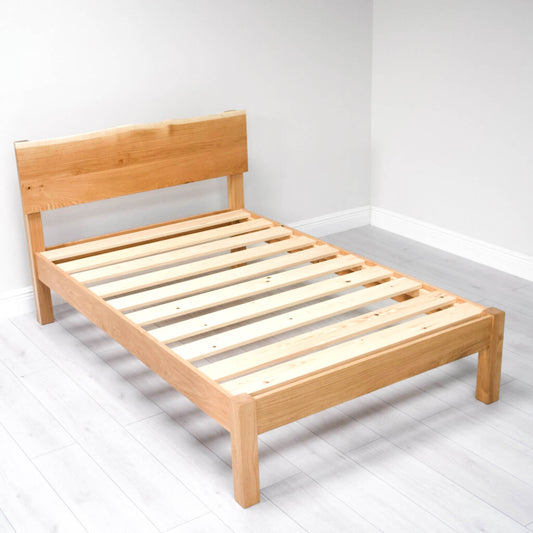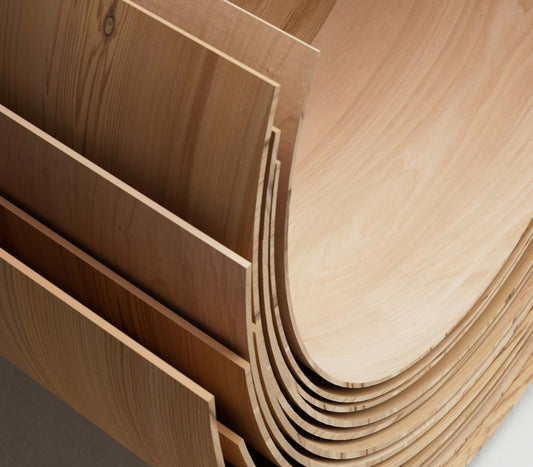Have you ever stopped to think about the parts that make up your bed frame? It can be easy to take our beds for granted, but there’s a lot of work that goes into perfecting each frame, with care and attention given by skilled workers.
One of the unsung heroes of the modern bed frame is the base, in particular, the slats. Slats serve a necessary but often undocumented purpose of providing a supportive base for your mattress to rest on.
So, why exactly do beds have slats, and are there any alternatives to them? Find out this and more as we dive deep into the practical world of bed slats.
What is a Slat?
A slat is a thin strip of material (often wood) that sits underneath a mattress in order to keep it in place within the confines of a bed frame. Most bed frames use a series of slats, which can be arranged and designed in various ways depending on the needs of the frame and user.
How Do Bed Slats Work?
Different bed frames will utilise different slat designs, however, most will stagger the slats in and amongst each other in order to cover as much surface area as possible.
The slats absorb the weight of the mattress, and anything that rests on top of it, including pillows, bedding, and people. This not only keeps the mattress in place but also supports it from beneath, providing consistent support and absorbing movement.
How Many Types of Slats Are There?
In bed making, there are two types of slats commonly used:
Solid
Solid slats are flat. This means that they offer a much firmer response to weight being applied from above, which can be preferable to those with back pain.
Sprung
Sprung slats have a slight curve in them, which allows them to bend and contort based on the weight they carry. They have a softer response, and provide more flexible support in comparison to solid slats.
|
Slat type |
Characteristics |
Benefits |
|
Solid |
Smooth finish, flat, minimal flex, firmer feel |
Less sagging, durable, quiet, supportive |
|
Sprung |
Curved (convex), flexible, responsive back support |
Adaptable, lighter, breathable |
Slatted vs Non-Slatted Beds

Slats are a common feature in most bed designs. Though, some manufacturers may neglect them in favour of a solid base. At The Wooden Bed Company, however, every wooden bed we sell comes with high-quality, durable slats.
Non-Slatted Beds
As an alternative to bed slats, some designers will instead use either:
A flat base: Usually made from a continuous piece of wood or metal, which spans the entire length and width of the mattress.
Box spring (sometimes called a divan): Similar to a flat base, but contains a series of springs within the structure, which are often housed in a metal cage.
Bunkie boards: Bunkie boards are thinner than box springs, and sit directly on top of the bed frame itself to provide a structurally-sound platform for a mattress to sit on.
The Benefits of Bed Slats
Many often wonder if bed slats make much of a difference. This is understandable, as slat assembly can be somewhat trivial and frustrating. However, they serve a necessary purpose, and have many advantages compared to solid bases:
Improved Support
No matter what type of slat you choose, bed slats provide the essential support needed to a mattress in order to help it do its job. Without slats, some mattresses may sag and develop issues over time, affecting both their overall quality as well as your sleep.
Air Circulation
Compared to a solid base, which is often one continuous piece of material, slats allow for air to be circulated in and amongst the individual planks, which allows mattresses to breathe, and reduces the build-up of moisture and, in some cases, smells. Compared to solid base beds, which can run the risk of overheating the mattress and causing you to wake up too hot.
Value
Due to their simplistic construction, bed slats tend to be less expensive than solid bases or box springs.
Adjustment
Depending on the design, some beds offer two slat height options, with one sunken, ensuring the mattress stays snugly in place while also enhancing the overall style and also making the height adjustable.
With our beds, for example, the slat position can be customised at the point of purchase. You can choose between two different models, with which you can:
- Have them sit level with the top of the sides of the bed frame
- Have them recessed into the bed frame by about 50 mm
While this won’t adjust the feel of the slats much, it does provide some level of customisation around your sleep height.
Ease of Use
Bed slats are a very simple invention. Unlike other components of bed frames, like the gas-powered struts of ottoman beds, for example, they require very little upkeep and can be installed in a matter of seconds.
The Wooden Bed Experts
Building wooden beds is our forte. In our UK-based manufacturing facility, we design and build thousands of wooden beds by hand and to order.
We use reliable manufacturing methods like mortise and tenon joints, along with high-quality oak and pine materials sourced from sensible suppliers. Explore our handmade range of wooden beds, with customisable slat positions, today.















